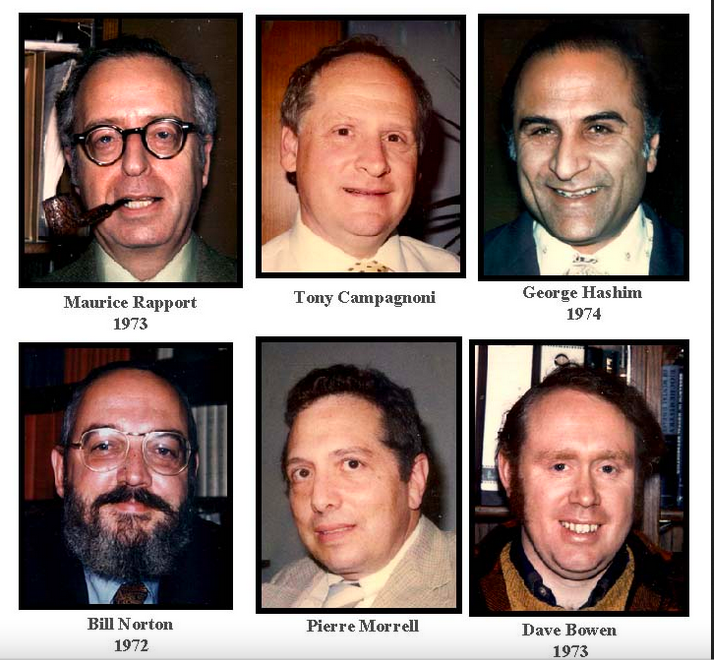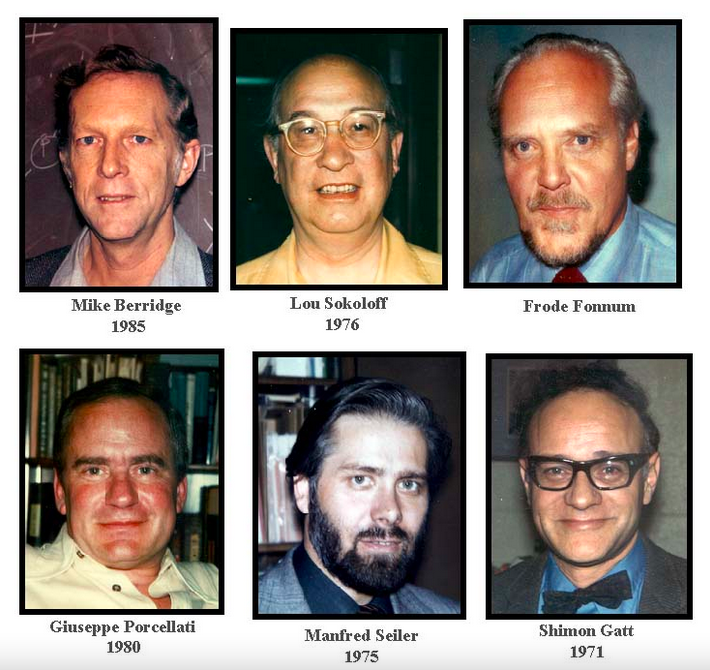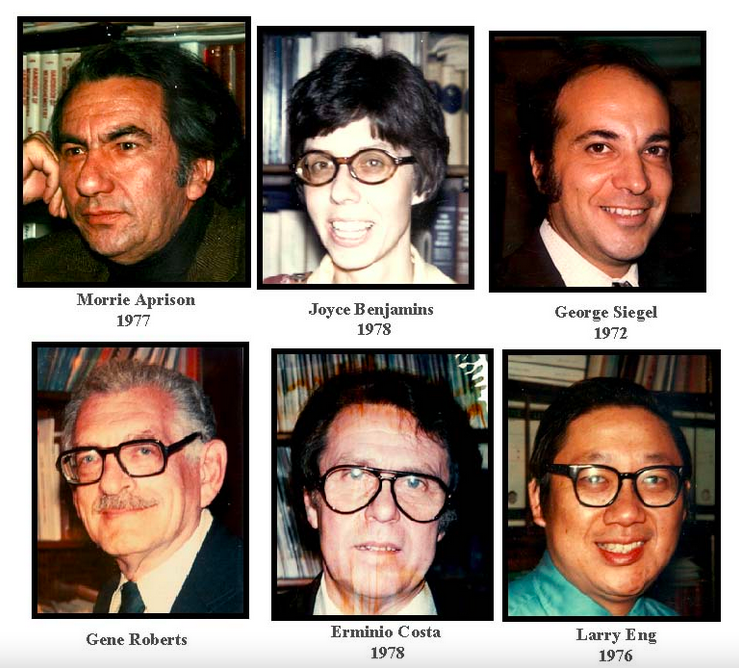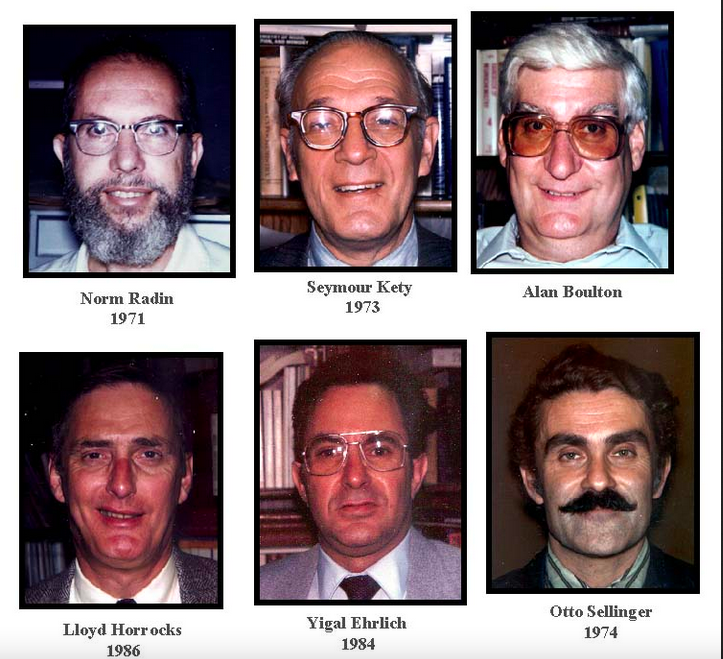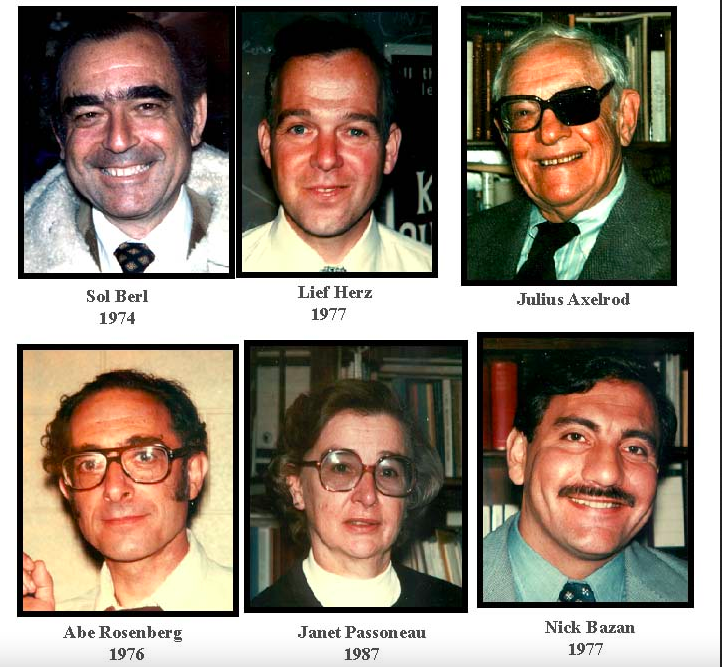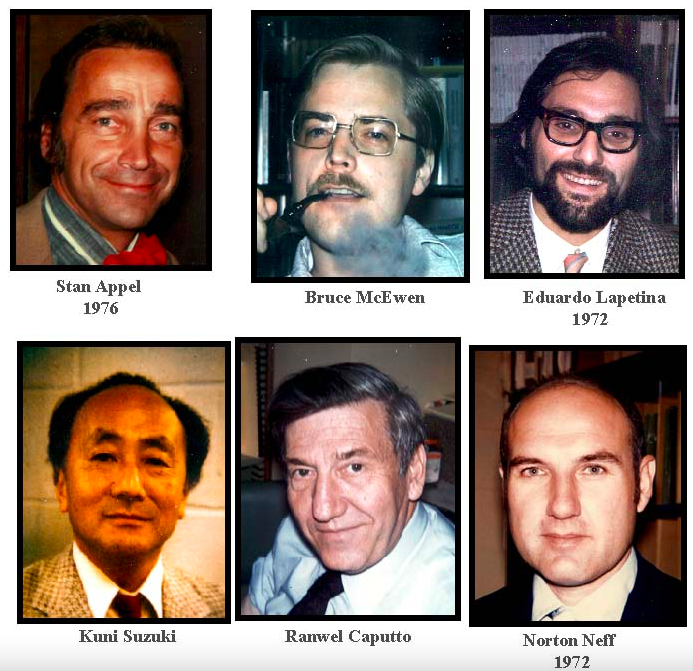Oral History of the American Society for Neurochemistry |
- Home
- About The ASN
- History
- Oral History - Dr. Agranoff
C.F.B.: Our first speaker today is Bernard Agranoff, a Founding Father of the ASN. He will reflect upon ASN's past history , show some pictures and describe his vision for the future of the ASN. Bernie, the floor is yours.
2. Some Thoughts about ASN's Past and Future - Bernard W. Agranoff
Thank you, Claude. First, I bring you greetings from two of our old soldiers who are not here tonight: Lou Sokoloff and Abel Lajtha, both of whom are here in spirit, but would have liked to be here in the flesh.
I note that our audience has a preponderance of very senior neurochemists, and believe the evening will gravitate toward reminiscences of the past, so let me address the future briefly by way of a story.
An old man was on his deathbed and had his sons and daughters about him. The eldest said, "Pa, it's a terrible time to bring it up, but we have to discuss something with you before you pass on."
"What's that?"
"Well, you know that funeral plot that we had for you?"
"Yes."
"Well, they built a condo right in front of it and in order to have access to the cemetery, one of us would have to live there and none of us wants to. So, we found another plot, which is conveniently located for us. It's kind of run-down and not very attractive, but we could visit your gravesite more often. Then there's a third plot, a little hard to get to, but it's on top of a hill with a breathtaking view of the ocean. We just can't decide which one would be the most appropriate."
The old man looked at each of his children, one at a time and then said, "I'll tell you what. Surprise me!"
So, it will be our successor neurochemists who will surprise us about the future of neurochemistry, and it will not be our option to make such decisions. As parents or grandparents of the ASN, we nevertheless should do our best to identify our society's assets, then pass them on with our blessings, and get out of their way! I believe the direction that the ASN is taking in encouraging more interaction with the ISN, the ESN, and other neurochemical groups is a good one. We are dwarfed by the larger neuroscience societies, so the more that we band together, the more impact we'll have as neurochemists. The ISN's Journal of Neurochemistry and ASN's book Basic Neurochemistry are important parts of our neurochemical legacy, and I am pleased to have been part of them. I believe that we should use those publications to nurture and to strengthen our societies. I think that the relatively small size of our meetings also constitutes an asset. We often hold our annual ASN meeting in small towns (like Chicago?!) that are able to accommodate our entire membership. The less frantic pace of our meetings and the opportunities to make friends among other neurochemists and molecular neurobiologists are, in my mind, strengths.
Neurochemists, like Thudichum, tend to be interested in food. As you know, in addition to being one of our first neurochemists, Thudichum also wrote a cookbook as well as a book on wine. Olfaction and taste, being chemical senses, qualifies neurochemists as specialists in the science as well as the pleasures of gastronomy. I hope neurochemists of the future will count among their members those who share an interest in the social aspects of molecular gastronomy in the tradition of the late Seymour Kety, Henry Mahler, and of course, Jordi Folch, whose name will come up again and again this evening. I know we're gong to have some Jordi stories tonight, and I don't want to take away from Marjorie Lees presentation, so I'll restrict myself to two anecdotes.
The first goes back to my earliest recollections of seeing Jordi in action, long before there was an ASN, at Business Meetings of the American Society for Biological Chemists in Atlantic City in the 1950's. I noticed this little man who would get up frequently to argue a point of order. He had a thick accent and spoke rapidly, making a lot of "zz" sounds. As I became interested in research on brain lipids, I got to know him well, and worked together with him in establishing the ASN in 1969. Nevertheless, when I became President of the ASN in 1973, I dreaded the Business Meeting, anticipating Jordi's getting up and shouting, "You are out of order, Mr. Chairman!" My knowledge of Robert's Rules of Order was very limited. Then I had, 1 must say in all humility, a great idea. Cara-Lynne Schengrund was a member of our society, and knew the Rules cold. I asked her to attend our Council and Business Meetings as a parliamentarian. Her help was priceless, and I remain grateful to her for that.
The other story revolves about a visit I made to the McLean Hospital laboratories sometime in the 1970's, where I had lunch in the cafeteria with Jordi and Al Pope, generally acknowledged to be second-in-command. I should add that Al is a pleasant and friendly sort and could hardly be described as thirsting to ascend the throne. As we were eating, Jordi was discussing lipid separation techniques, then suddenly stopped and grabbed his chest. A1 blanched and looked at him very concernedly. Jordi, in his inimical style, said, "It'zz just a zztitch, don't get your hopez up!" and resumed his scientific discussion. It was always the "asides" that Jordi came up with that stick in one's memory.
I would like to conclude with a few photos. For many years, I had a $10 Polaroid Big Shot camera (the model Andy Warhol used) and took pictures of visiting neurochemists, most of them members of ASN. It used flashbulbs and had a broad depth of focus, ideal for portrait photography. These pictures are appended, with names and dates, and include a few non-American colleagues who wandered through Ann Arbor over the years.
|
|
|
|
|
|
|
|
|

